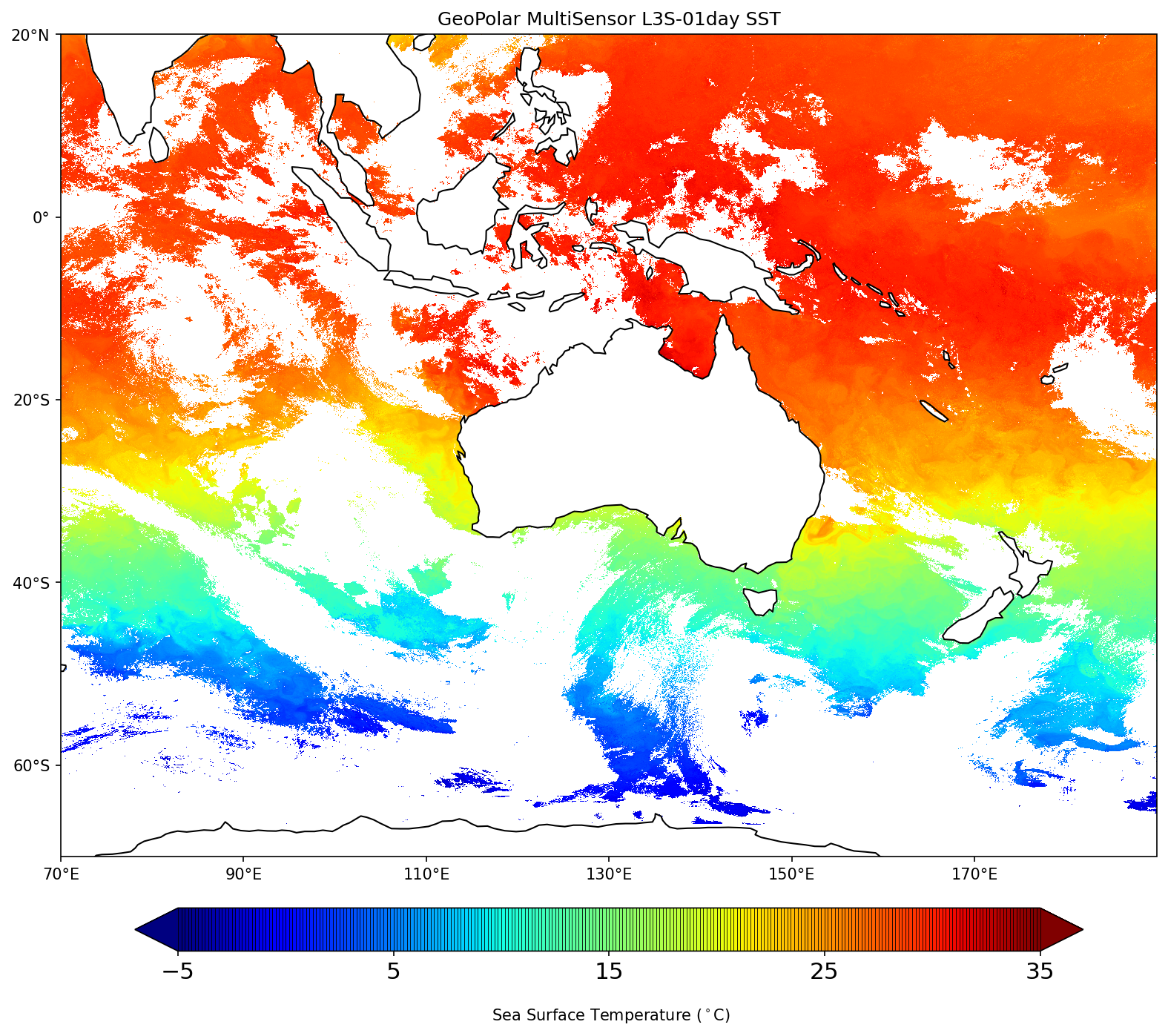Are you interested in Sea surface temperature (SST) products within a few kilometres of coasts that can resolve fine-scale features, such as ocean upwelling or diurnal warming? The IMOS SST Products sub-Facility at the Bureau of Meteorology has released new Himawari-8 and Multi-sensor SST composite products that could be helpful for your application.
The next generation Japanese geostationary satellite, Himawari-8 started providing real time data from 7th July 2015. The advanced Himawari imager (AHI) on board Himawari-8 provides full disk images every 10 minutes with 2 km spatial resolution for infra-red (IR) frequency data at nadir. The Bureau has produced various Himawari-8 SST operational products for Australian applications since the year 2016. Recently, the Bureau collaborated with the University of Reading and modified their radiative transfer model and Bayesian cloud clearing method so that they could be applied to Himawari-8 to retrieve more accurate SSTs. The bias model based on in-situ data was developed in the Bureau to define uncertainty values for every pixel that has valid values for SST. The following products are available:
- L2P – geolocated, native resolution SST data over the entire Himawari-8 field of view (59oE to 222oE, 81oS to 81oN).
- L3C – multiple swath, gridded, single sensor, available over the 70oE to 190oE, 70oS to 20oN domain, available for different time periods:1 day of night-time only data, 1 hour data and 4 hour data.
Further, the geostationary Himawari-8 data are composited with data from the Visible Infrared Imaging Radiometer Suite (VIIRS) and Advanced Very High-Resolution Radiometer (AVHRR) satellite sensors installed on polar-orbiting satellites to construct new “Geo-Polar Multi-sensor L3S” products on the IMOS grid. The Himawari-8 data products are reprocessed back to the year 2015 and available to users to 31st December 2020, along with reprocessed Geo-Polar Multi-sensor SST products, via the National Computational Infrastructure (NCI).
Reprocessed BoM Himawari-8 L2P fv02:
Available on NCI at /g/data/gy24/ghrsst/v02.0fv02/Geos141/L2P/ABOM-L2P_GHRSST-SSTskin-AHI_H08. Contact [email protected] for access details.
IMOS Himawari-8 L3C fv02:
L3C-04hour:
L3C-01day night:
IMOS Geo-Polar Multi-sensor L3S fv02:
https://dapds00.nci.org.au/thredds/catalog/qm43/ghrsst/v02.0fv02/Continental/L3S-01day/night/catalog.html (look for filename containing string ‘GeoPolar’).
See https://opus.nci.org.au/pages/viewpage.action?pageId=141492230 for further information
The figure at right shows hourly, 4-hourly and daily night-time L3C composites of Himawari-8 SST along with daily night-time composite of Geo-Polar Multi-sensor L3S SST for 6th December 2020.
